Teardown of a General Dynamics Military Audio to USB interface box
Last Update: Oct 11, 2020
What's in the box?
Impressive build; all metal box with durable coating. Far cry from typical commerical hardware these days.Even with an all-metal shell and the PCB being supported on all side, they still put an internal standoff in the center. Anti-vibration measure? Note the four anti-tamper stickers, two of which have already been broken. Servicing?
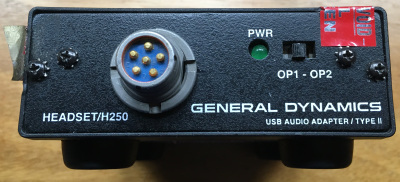
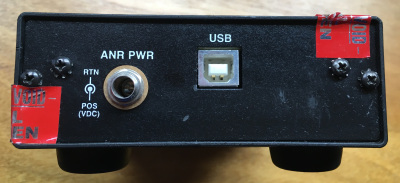
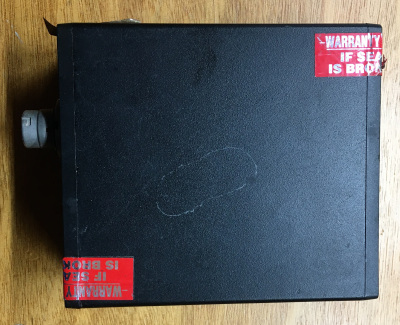
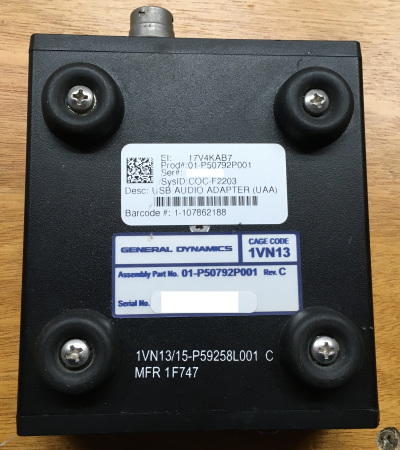
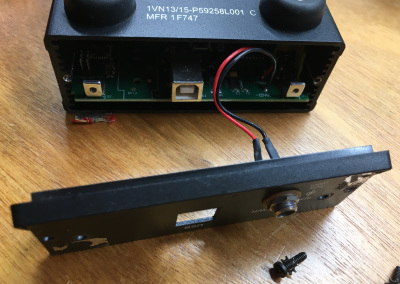
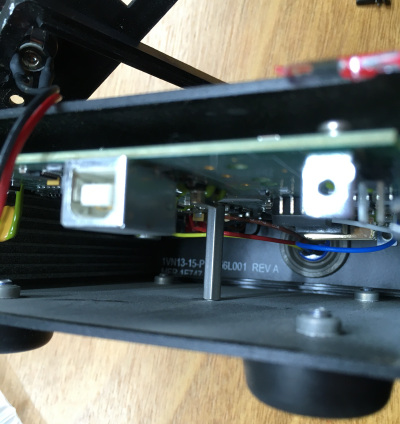 Going to transcribe some of the text for the benifit of people searching part numbers:
Going to transcribe some of the text for the benifit of people searching part numbers:El: 17V4KAB7 Prod#: 01-P50792P001 Ser#: SysID: COC-F2203 Desc: USB AUDIO ADAPTER (UAA) Barcode #: 1-107862188 General Dynamics Cage Code: 1VN13 Assembly Part No. 01-P50792P001 Rev. C 1VN13/15-P59258L001 C MFR 1F747I think the white text scribed directly into the case is part number/identifier for the box itself. The end plates have similar numbers inscribed into them.
Ports and Controls
Some of the external features are a bit mysterious. The USB jack is self-explanitory; this is what Linux reads indmesg when it's plugged in:[ 2937.611245] usb 2-1.5: new full-speed USB device number 3 using ehci-pci [ 2938.191223] usb 2-1.5: New USB device found, idVendor=1a16, idProduct=3155, bcdDevice= 0.03 [ 2938.191228] usb 2-1.5: New USB device strings: Mfr=1, Product=2, SerialNumber=0 [ 2938.191230] usb 2-1.5: Product: UAA_2 [ 2938.191233] usb 2-1.5: Manufacturer: General Dynamics [ 2938.201694] input: General Dynamics UAA_2 Mouse as /devices/pci0000:00/0000:00:1d.0/usb2/2-1/2-1.5/2-1.5:1.3/0003:1A16:3155.0004/input/input23 [ 2938.202482] hid-generic 0003:1A16:3155.0004: input,hidraw3: USB HID v1.00 Mouse [General Dynamics UAA_2] on usb-0000:00:1d.0-1.5/input3 [ 2938.256417] mc: Linux media interface: v0.10 [ 2938.459349] usbcore: registered new interface driver snd-usb-audioThe PTT button on an H-250 handset registers as a mouse button click (I think middle button - I actually don't remember). The connector labeled HEADSET/H250 is the industry/military standard U-183 / M55116/9 (read more here). These started life as basic handset or microphone interfaces, but now support accessory power, serial communication, and cipher key transfer - with full backwards compatability, if I'm not mistaken. The connection identification flowchart must be a nightmare.
The exactly functionality supported by this box is unkown to me, but the complexity of the electronics suggests it might support more than simple audio. External power input (or output?) via ANR PWR - alternate power supply for the U-183 connector. OPT1 - OPT2 switch - unknown functionality. Doesn't seem to have any effect on operation.
Inside
Now the interesting bit: the electronics!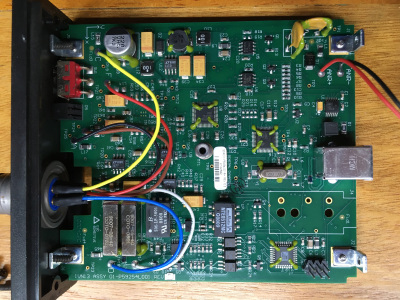
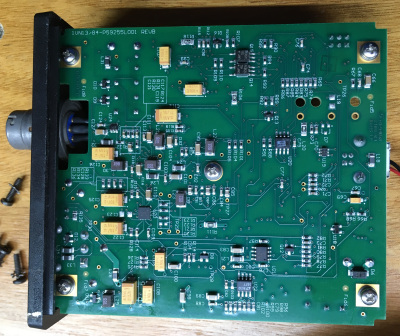 More part numbers and markings:
More part numbers and markings:1VN13 ASSY 01-P59254L001 REV E General Dynamics GDAZ-01-P59254L001-RH REV E E 2122592 1VN13 ASSY 01-P59255L001 REV BEach side of the PCB has seperate assembly/part tracking number? Interesting.
PCB Analysis
Appears to be a four layer board. I've marked most of the major parts and sections: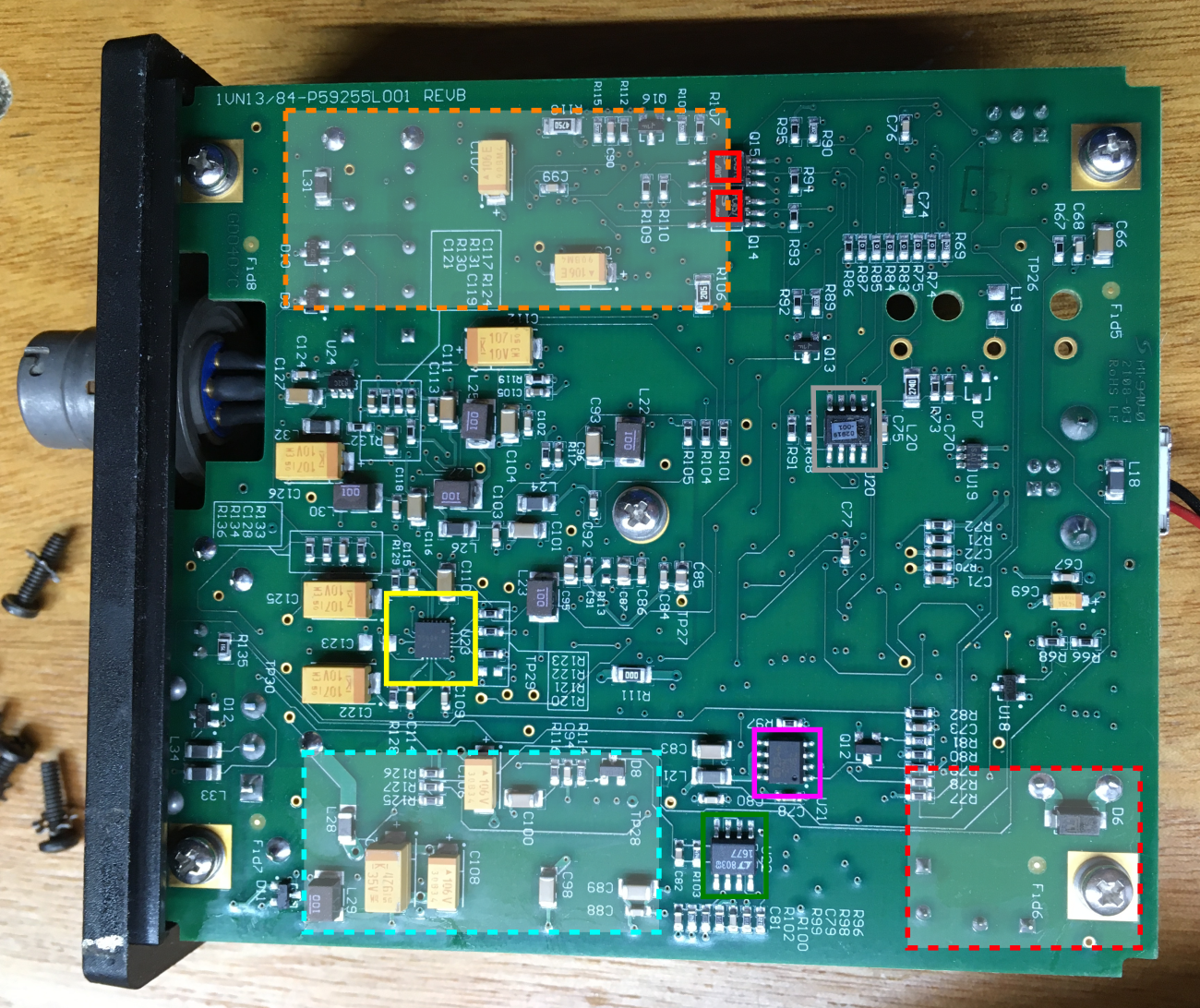
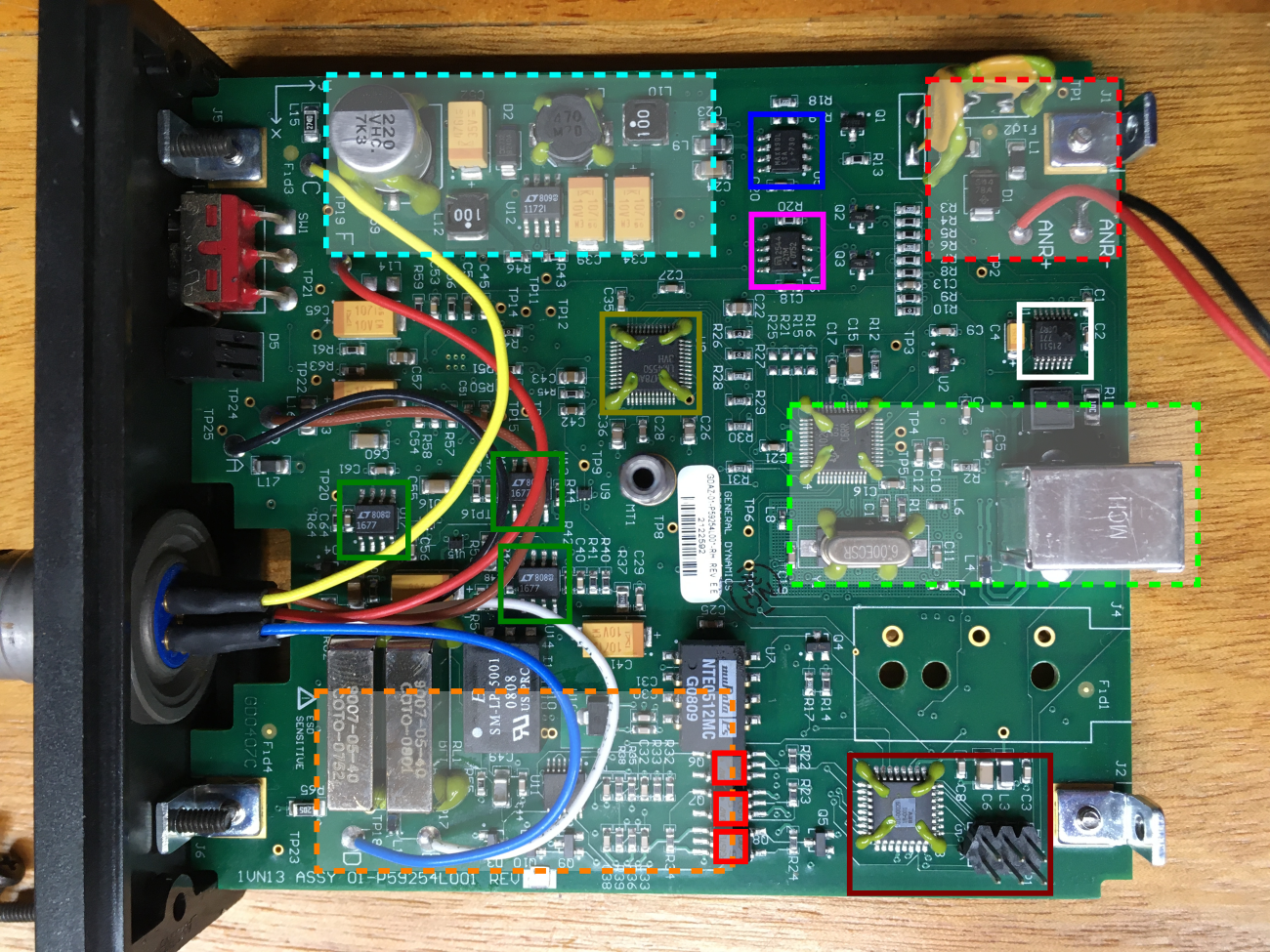
Sections:
▨ 12 V supply, Boost ConverterBuilt around the Linear LTC1172I (local). Boosts the 5 VDC from USB to 12 V for powering devices attached to the U-183. Appears to be wired in parallel with the back panel socket - U5 and U6 may act as protection switches. ▨ USB Interface
A Texas Instruments TAS1020B (local) "USB Streaming Controller" is used as the USB interface.
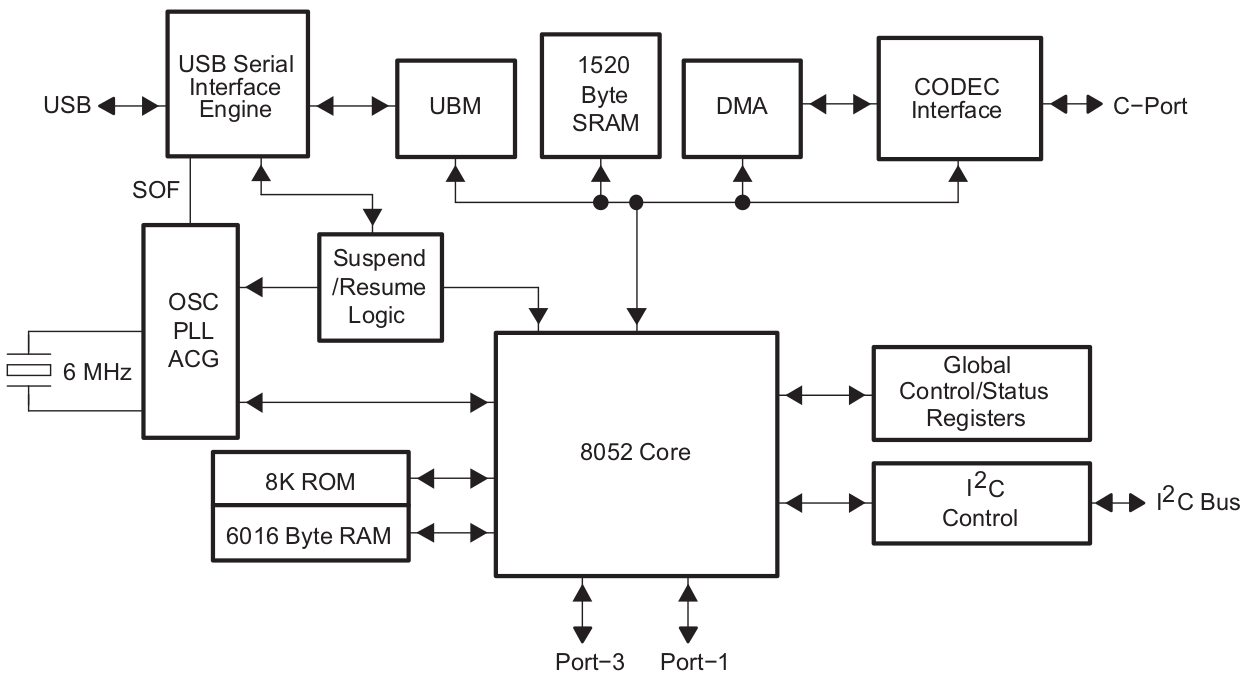
Above: Functional Block Diagram, Section 1.3 of TAS1020B datasheet ▨ Audio Section
The audio section is an 'island' that is well isolated from the rest of the board:
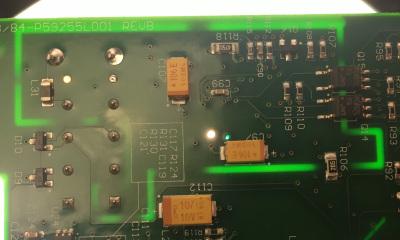 An array of optoisolators (Sharp PC457L, specs below), two transformers (U7, muRata NTE0512MC; U14, SM-LP-5001), and a pair of SIP relays relays (COTO 9007-05-40) connect this island to the rest of the board.
Of particular interest is U11, an IC labeled as follows:
An array of optoisolators (Sharp PC457L, specs below), two transformers (U7, muRata NTE0512MC; U14, SM-LP-5001), and a pair of SIP relays relays (COTO 9007-05-40) connect this island to the rest of the board.
Of particular interest is U11, an IC labeled as follows: ST EZ65 S339L MRC651The logo indicates it from ST Micro but the part number doesn't return anything, which surprises me. Usually this means the part is a custom ASIC. I'd expect custom parts in military radios, but not in a 'simple' audio interface box.
Maybe it's a part used in other military hardware? That would make sense if the engineers wanted to make sure the functionality of the headset/audio jack met all relevent specs and functionality.
Makes it harder to reverse engineer the functionality, sadly.
Q7 and Q8 are outputs from the audio section, and connect to
R22 and R23 appear to be pull-ups to ATmega48 VCC Q6: Output, pin 25 on the ATmega48, R22 is pull-up resistor. Q7: Output, pin 23 on the ATmega48, R23 is pull-up resistor. Q8: Input, Q5 appears to be a level shifter, but I can't find a connection to the ATmega48 Q14 R93 Q15 R94 ▨ Power, Back Panel
Diode for polarity protection, most likely.
Two polyfuses; one of the positive rail, one on the negative. Never seen that before.
Major parts:
■ U8, Texas Instruments LM4550"AC '97 Rev 2.1 Codec with Sample Rate Conversion and National 3D Sound" ■ U23, National Semi L4888SQ
"Boomer® series, Dual 2.1W Audio Amplifier Plus Stereo Headphone & 3D Enhancement" Note: This chip no longer appears to be in production. ■U18?, Microchip/Atmel ATmega48V
"High performance, low power AVR® 8-bit microcontroller" Sticker:
01-00029 18-001 REV_
■ Sharp PC457L"High Speed 1Mb/s, High CMR Mini-flat Package OPIC Photocoupler"
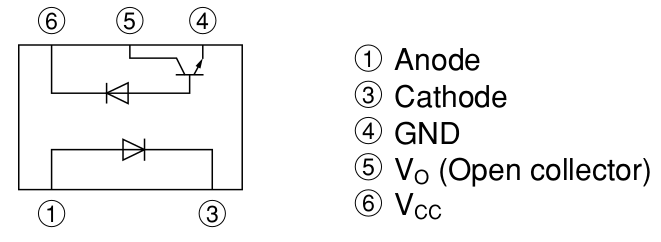
Above: Internal Connection Diagram, Sheet No.: D2-A05102FEN ■ Analog Devices/Linear LT1677
"Low Noise, Rail-to-Rail Precision Op Amp" ■ U6, Microchip/Micrel MIC2544-2YM
"Programmable Current-Limit High-Side Switch" ■ U5, Maxim Integrated MAX890L
"1.2A, Current-Limited, High-Side P-Channel Switch with Thermal Shutdown" ■ U20, ???
ROM? Sticker:
02919-001
■ U1, Texas Instruments 21511